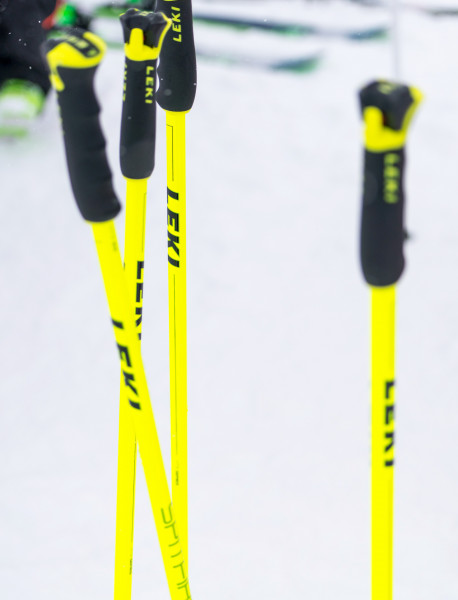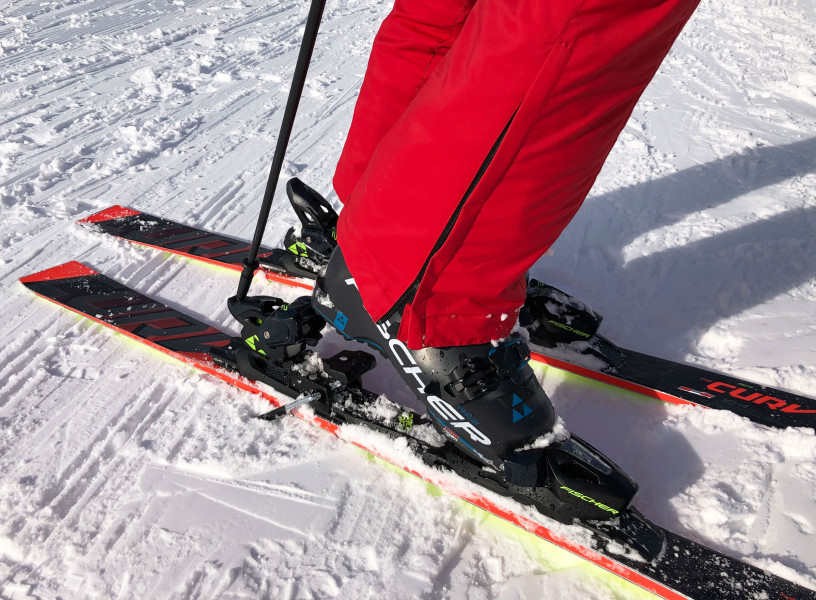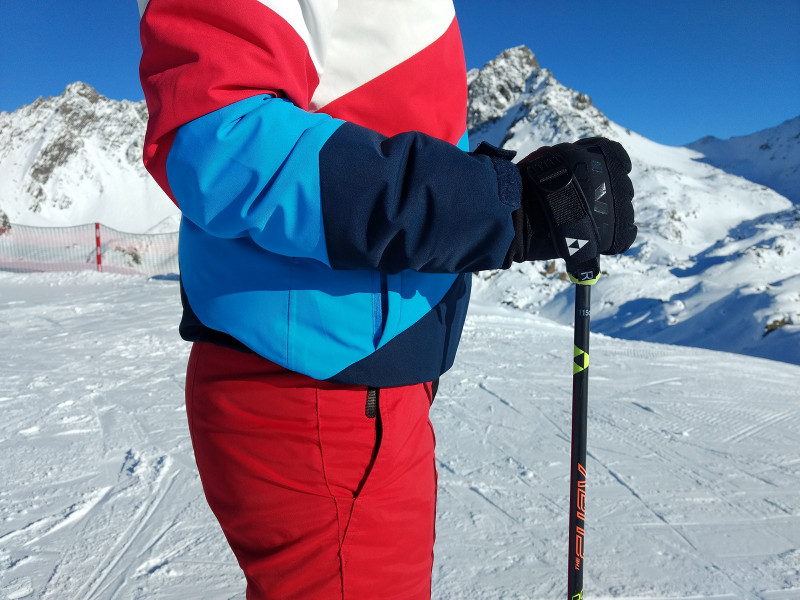Nearly every skier you'll see on the slope uses ski poles. This is no coincidence: Ski poles are usually sold together with the rest of the ski gear. But what are their advantages, and how do you make the most of them?
Why use ski poles?
Advantages of ski poles include getting the snow off your boots, opening ski bindings and helping you get up after a fall.
Their main purposes, however, are their role in balancing you in curves and helping you push yourself forward on even paths. In steep parts of the slope they are important for your rhythm during short turns. If you've ever skied in the deep snow off from the groomed runs, you'll know that ski poles are an indispensable part of the ski gear.
What to keep in mind when shopping
As any part of ski gear, ski poles are available in different lengths and varieties. Beside your own height, the type of terrain you're planning to ski in should also be taken into consideration. There are three factors you need to consider when you're buying ski poles: Pole length, material and basket size.
Pole length
The length of the pole is the most important factor you need to consider. Only when the pole length is exactly coordinated with the skier's height can it improve your balance during turns.
Useful tip: Touch the floor with the end of your pole. If your forearm and upper arm form a right angle, the pole has the right length for you.
For children and ski tourers, adjustable ski poles are recommended. Their lengths can be varied according to the skier's height and terrain conditions.
>> Find the right pole length for you easily with our ski pole calculator!

The right material
The price of ski poles greatly depends on the material they're made of. Aluminum poles can be recommended for average use, but bend easily during falls. Prices for aluminum ski poles start at 25€.
Heat-treated aluminum poles are a bit robuster. Their strength level is usually printed on the poles, numbers starting with a 6 indicating the highest quality.
The best ski poles you can buy are made of carbon fibers. They are extremely light while offering high stability and damping. Their outstanding quality comes with an accordingly high price, though.
Basket size
The ideal basket size depends on the terrain you'll be skiing in. Smaller baskets are needed on groomed runs, since they make the poles lighter and reduce the danger of falling.
For freeriding tours, you'll need poles with bigger baskets. They prevent you from sinking too deep into the snow and offer a better grip in deep snow.
Looking for new ski poles? Check out the large selection at our online shop! >> SportFits
How to use your poles correctly
Theory is the one thing – using that theory in practice is what counts! Using your poles is a core part of skiing. The correct execution of this technique needs a little practice though.
This is how it works:
The skis should always turn around the pole. This means, the poles touch the ground on the inside of the curve while turning.
To keep your balance during active short turns, use the poles in the front of the skis. The more ambitious your turns, the closer to the front of the skis your poles should be.
Important:
In order to keep your rhythm you need to pay attention to your timing. If you use your poles too early, you won't be able to ski the curve very smoothly. If you're too late, your poles become irrelevant lose their positive effect on your technique.




